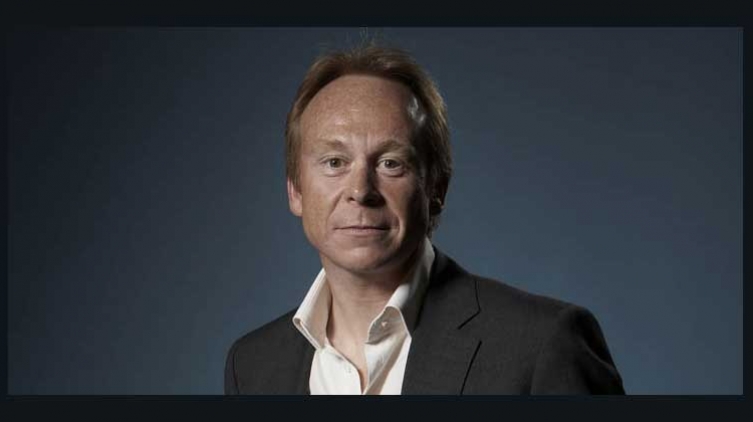Being flexible is key to success in an industry undergoing
dramatic shifts, ad chief says.
Advertising
agencies must adapt to rapid changes and have a flexible approach if they want
to succeed in the cut-throat world of marketing, said a leading industry
executive.
Robert
Senior, global chief executive officer of Saatchi & Saatchi, said that
though emerging new technologies, dwindling client confidence and the ongoing
economic downturn are major challenges for the industry, there are still enough
sweet spots for companies to tap into for growth.
Saatchi
& Saatchi was one of the few companies that managed to stay profitable in
what was a bleak year (2014) for most advertising companies. Much of that
success, Senior says, stems from the company’s China operations, which have
maintained steady year-on-year growth.
Senior,
who was appointed global CEO in January this year, reiterates that flexibility
is the key to sustained growth. “We did not have any concrete plan to tackle
the rapid changes that were occurring in our industry. But we believed that
since we are part of the services sector, we must serve our clients with the
best of our capabilities, even if they (clients) are changing tack,” he said.
Marketing
communication company ZenithOptimedia expects global advertising expenditure to
grow by 4.9 percent this year to $545 billion. The estimate for this year is
down by 0.4 percentage points from the previous forecast in September 2014,
with small downward revisions across many regions of the world. This means
there is a minor but widespread decline in advertisers’ confidence globally.
However,
the picture in China is completely different. According to ZenithOptimedia,
China overtook Japan to become the second-largest contributor of new
advertisement revenue in the global market last year, behind the United States,
and accounted for 19 percent of the total.
The
rapid growth in the Chinese advertising market is more a result of industry
practitioners adopting the new technologies and Western practices and
benefiting from the rapid inflow of funds from investors hoping to tap into the
country’s growth opportunities, said Senior.
Since
China also has the largest section of Internet users in the world, Saatchi
& Saatchi initiated a “hybrid experiment” project to collaborate with,
build and learn from digital and technology start-ups. By bringing in people
with expertise outside of the conventional agency role, the project allows
employees to gain access to technology, and non-traditional thinkers provide a
new way to create better work, he said.
What’s
more, the agency’s digitalization strategy in China varies from that of
competitors. While other agencies establish their own digital teams or
departments, Saatchi & Saatchi empowers each team with the digital knowhow
and capacity. What this means, said Senior, is that the creative staff will be
able to deploy both traditional and digital tools, according to client
requirements.
Digitalization
is beset with several challenging conditions because the entry costs are
relatively low. But it also means that companies need to be more nimble to have
more options, said Senior.
The
company has come out with several initiatives that seek to nurture and embrace
the entrepreneurial spirit that the digital world encourages. “We don’t talk
about digital because it is as fundamental to us as the oxygen we breathe. It’s
not a discipline, it’s just part of our agency. It also helps in the evolution
of our talent base. When the going gets tough, the team automatically develops
resilience,” said Senior.
Senior
said Saatchi & Saatchi also focuses on using the latest technology such as
big data or cloud computing to leverage its offerings. Even though these
technologies do not define the agency, they help in providing valuable insights
and distribution.
Mutesic,
a mobile phone add-on introduced in China last year, was Saatchi &
Saatchi’s latest attempt to adopt the latest technologies to help improve
people’s lives.
Together
with the Vice media, the application automatically syncs with the user’s
current location using global positioning satellites, and then turns down the volume
of the music to which the user is listening when they approach busy road
intersections. This is also based on the fact that traffic accidents have
increased by 300 percent in China because people wearing headphones drown out
ambient warning sounds.
“It’s
undoubtedly technology-based. But the idea is human-based. Our starting point
is not a mainframe, because we are not Accenture. We are an advertising agency.
The start point is creativity. Then we see what platforms will help. We start
with humans and we end with humans, and in the middle we have technologies,” he
said.
Curiosity and courage remain key ingredients for young
creatives
At
a time mixed with industry downturn, price wars and the vicious cycle of
phishing ads, a decline in the industry’s talent and an overall drop in
creativity have been ever more noticeable.
To
offset this, Saatchi & Saatchi launched a Frozen Monster mobile phone
application during a company trip at the beginning of this year to recreate the
essence of the advertising industry – creativity, or the monster in the body.
At
present, Saatchi & Saatchi has more than 400 employees in Beijing,
Shanghai, Guangzhou and Hong Kong. More than 50 percent of them work in
creative departments, and over 80 percent of them local talent.
Robert
Senior, global chief executive officer of Saatchi & Saatchi, says that the
main attribute the company looks for in potential creative talent are curiosity
and courage.
These
attribute are essential as marketing departments are becoming more sophisticated,
and technologies also give more access to more information.
“People
have far more access to creativity, the nature of the conversation is different
and the landscape is more complex,” he said.
“But
it does not change the fundamental truth of the business. Ultimately, there are
many platforms. But however sophisticated the meetings are and whatever
technology is, it all boils down to ideas, then you have nothing.”
At
the same time, an important lesson in using creativity as a business tool is to
accept the concept of failure, said Senior.
“Every
idea is permitted to fail. What is not acceptable is not to try it at all. It
is not the fault of the students, but rather the people who are briefing the
students,” he said.
Yet
another source of inspiration that companies can tap into is the abundant
creativity that exists within the employees.
“It’s
quite natural for most people to dismiss new ideas as something impossible. But
the reality is that most of the modern discoveries were things that were
considered impossible in the past. The
important thing is not to be caged by other people’s ideas. Ideas are much more
powerful than anything else and are also an inspirational source for work,”
said Senior.














